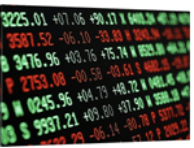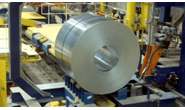Futures

Hot Rolled Futures: Wow! What a Month Makes! Boom!
Written by Jack Marshall
November 17, 2016
The following article on the hot rolled coil (HRC) and financial futures markets was written by Andre and Jack Marshall of Crunch Risk LLC. Here is how Jack saw trading over the past week:
The bearishness was so thick 1-2 months ago you could cut it with a knife! The steel futures were getting crushed, $480/ST was the low print on Cal ’17, not much different than the spot prints in the $460-465/ST zone. CFR Turkey scrap was sub $200/MT with domestic scrap soon to follow, and demand in the U.S. was dismal (maybe still is for some). My broken record story was that it would surprise and rally! I did know it would rally, I just didn’t know when. I guessed 4th quarter because inventories were/are so low and buyers would need to move at some point, but a turning point in the New Year was not out of the question (markets can remain irrational a lot longer than one can remain solvent). Having traded a Copper book for 6 years, I know from experience why it’s important to be the contrarian (if you want to make money trading price direction anyway). Markets function normally when there are equal buyers and sellers. They function irrationally when there are more participants wanting to buy or sell. If everyone is/was bearish, then there’s no one to buy it and the market drops to levels to find eventual buyers, levels it can’t sustain, and visa versa on the highs. I have experienced moments when I knew intellectually that giving in to the emotion/fear and closing losing positions would result in the market changing direction right afterward (capitulation), and still had to trade it (losses, or fear of more, can make any rational person do things they don’t want to). Markets are cycles, they always will be no matter the story line or the emotion attached to them (Obama/ISIL/Ukraine/Brexit/Putin/Bernie/Trump).
I’ll be frank, Steel futures have suffered of late. The forward market has been a lot more volatile than would be expected, or even in relation to the spot market. This is not normal and is a function of a lack of liquidity on the part of buyers (at the lows, $480-495) and on the part of sellers now ($555-$5?5). In addition to my point above about letting emotion control your actions, it is important to note that there are likely two factors that have exacerbated this phenomenon:
One is the new paradigm of a smaller market. Less supply for lower demand market means Buyers, when they get nervous, have a larger impact on the price when they choose to wait to purchase (call it a lower inventory comfort zone – MOH 2.1 v. the old 3.0). Before when a mill’s capacity utilization rate went from 85 percent to 72 percent, they could manage at critical mass throughput to buy time. Now, when capacity utilization rates go from 80 percent to 65 percent, producers’ operations need to find further throughput to cover fixed costs, and have to push to find price levels where throughput works for cash flow (same holds true with scrap dealers, as their willingness to drop their drawers demonstrates). Lack of HR orders from energy has a lot to do with this as before it would serve a needed release valve when a tuber would pick up 20K ST at some low price, providing that throughput. What is true in spot is true in futures, and so a lack of buying interest by buyers, at the lows, on futures like Cal ’17 ($480-500/ST – a really big mistake!).
Second is the effect of Import Duties. The HR futures market has operated quite well despite the Integrated Mills efforts not to participate and embrace a hedge model. The futures market has done so because of traders who have hedged inventories of imports forward (sold) and service centers who have taken advantage of premium (contango) forward curves and converted cheap spot mill sales into aggressive forward CRU discount sales (cash and carry). Clearly Import duties have curtailed forward hedge sales of incoming imports. The forward market meanwhile has provided windows of opportunity when companies could have bought spot (like back at $440-460) and sold forward futures periods (at the time $515-$525 in Cal ’17 months), but the buyers’ fear and general lack of buyers in the spot market resulted in few transactions there.
So uncharacteristically of a future market, HR has actually moved more in the Cal ’17 period than it has thus far in spot prints, $575/ST (last trade) – $480/ST (low trade) v. $510/ST (current prints zone) and $460-465/ST zone (low spot prints). Unless import tariffs are permanent, and/or Big River will have no material effect on the U.S. market supply/demand picture, then this is a short-term phenomenon whereby the buyers missed a huge opportunity to cover prices at the lows on futures, and the sellers are missing an equally huge opportunity to sell forward futures now! I don’t remember a time when the futures have moved as much relative to spot!
Oh! Stock market! Hmm? If you’re not still long, Mistake!!! Fed’s looming rate increases (Dec. sounds for certain now) would put pressure on stocks, but that has been countered by Rumpism. Ooooh, sorry Trumpism!! That’s better! President Trumpism that is!! Hopeful bullishness for a biz friendly Tresident! Mmmm, so the market knows the end of the rally is near, but gotta wait on some biz friendly stuff comin’ outta this Republican? Democrat? Trumpet! Could be pretty bullish if we get Tax reform, ooh! Really! OR Regulation reform? Bring it!!!! OR Obamacare reform (well my family premiums have gone up 135 percent in 3 years) Ya, I’m there!!! OR Immigration reform, would be good (last time I checked we were a country of immigrants, so a clear path might be a good idea)! Uncertainty, but hope! Sounds a bit like the HR futures market. Stock market’s turn is in site, just not there quite yet, but don’t get long here, too close to apex me think.
Steel
Had a decent week in steel futures dominated by 3 trades in Cal. ’17, last week $550/ST and $553/ST and yesterday $575/ST. We are up from $540/ST a week back. Trades this week amounted to approx. 23,500 ST, while open interest rests just below 17,000 ST, this v. a high of high of 23,000 ST +. As well Dec. nearby traded $545/ST today v. $515/ST a week back. This reflects the spot move of a similar amount to $510/ST zone. Definitely some panic on the high side here. Wouldn’t mind being a trader again with this volatility!
Scrap
CFR Turkey has led the way. With spot having climbed to a high north of $280/GT and Dec. futures to a high above $300/GT, this is a pretty big move from the lows we saw at sub $200/GT. In sum, the driver is demand from mills that have switched to scrap v. raw materials where they can globally. The raw material prices have gone up as air pollution controls have curtailed production of Met Coke in China, which in turn has triggered short cover buying from low inventory mills across all raw materials, and thus the ferrous scrap alternative as well. Result is that the Turkish are buying again off our East Coast as have Chinese bought off our West Coast and other Asian countries have bought from our containerized market. This has relieved the pressure from the Coast supplies looking for homes in the interior U.S. and has given MW dealers room to negotiate higher prices, albeit modest ones so far. Compared to global prices we probably have a lot more to move up basis the world market. This gap probably going to narrow in December as domestic prices looks poised to move up again materially and global scrap price retreats a bit off its highs. Lat spot down about $9/GT and Dec future last $298/GT offered. We are last $265/270/GT on 1H 17 BUS futures, and expect a trade in the zone tomorrow.

Jack Marshall
Read more from Jack MarshallLatest in Futures

HR Futures: Plummeting open interest shows complacent buyers ignoring ’26 risk
A tour of the economy as it relates to hot-rolled coil futures.

HR Futures: Rangebound amid muted summer trade
Since the last writing of this article, CME hot-rolled coil (HRC) futures have been largely steady and lifeless, though there’s been some brief bouts of intraday volatility.

HR Futures: Market blues turn bearish
The cautious neutrality and summertime blues we discussed just a few weeks ago have evolved into something decidedly more bearish.

HR Futures: Curve switches gears
After a period of backwardation driven by headlines and CRU index anchoring, the CME HRC curve structure has undergone a notable shift.

HR Futures: Summer doldrums prevail
Not much to report on from the sleepy HRC futures market in the thick of the summer doldrums with trading volume nearly grinding to a halt.
